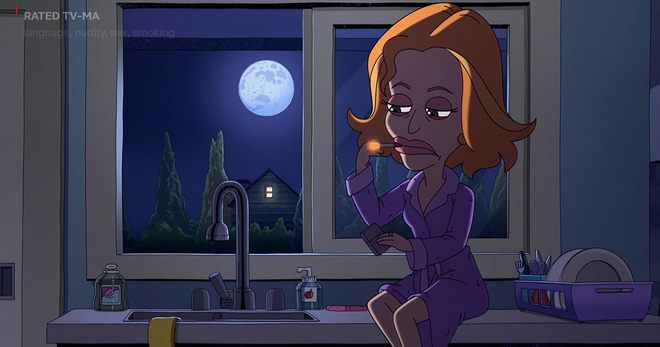Historical films and TV depict smoking — not its harmful health impacts
Despite long-established research that on-screen smoking influences young people to use tobacco products, cigarettes remain a popular prop in historical films and TV shows with many portrayals failing to show the harmful health impacts.
Truth Initiative’s latest annual analysis of tobacco imagery in popular entertainment (“While You Were Streaming: Lights, Camera, Tobacco?”) found that top movies in 2022 exposed an estimated 21 million young people to tobacco imagery. In addition, top shows among 15- to -24-year-olds exposed an estimated 25 million young people to these depictions. One of these shows, the historical streaming show “Dahmer — Monster: The Jeffrey Dahmer Story” which aired on Netflix, included over 300 tobacco depictions.
Peer-reviewed research from Truth Initiative demonstrates that exposure to smoking imagery in streaming shows can triple a young person’s odds of starting to use e-cigarettes. In addition, youth e-cigarette use remains a public health threat, with more than 2 million middle and high school students using these products, according to the 2023 National Youth Tobacco Survey. Nicotine harms developing adolescent brains and can make young people more susceptible to addiction later in life.
By repeatedly representing smoking from the past, Hollywood puts youth at risk for initiating tobacco use today and of lifelong addiction tomorrow. This should not be a case where history repeats itself. Shows and films can create a sense of the past through costumes, hair and makeup, props, and set design without relying on cigarettes as a crutch. They could also reflect the health dangers and consequences of tobacco use — but many do not.
Health impacts of tobacco use rarely make it to screen
The historical film “Oppenheimer,” one of the top movies of 2023, depicted its titular figure smoking but not his death from throat cancer, which is commonly associated with smoking. “Darkest Hour,” a 2017 film about Winston Churchill, depicted Churchill smoking but not his death from a stroke, the risk of which is double for a person who smokes. “Cassandro,” a 2023 film set in the 1980s, also failed to compensate for its tobacco depictions by showing the consequences on screen.
Some directors, however, have reflected the real-life dangers of smoking on screen. The 2004 biographical film “Ray,” which depicts its titular figure Ray Charles smoking, shows the impact of substance use on his life. And while the 2023 film “Maestro” doesn’t depict its protagonist Leonard Bernstein’s death from a heart attack related to his smoking, it does show his wife Felicia Bernstein’s death from lung cancer caused by smoking.
Snuff out on-screen tobacco
Many historical films and TV shows have also made efforts to not include any tobacco depictions. According to Smoke Free Media’s Onscreen Tobacco Database, “The Greatest Showman,” “Hidden Figures,” “Secretariat,” and “Invictus” are all highly rated films set in the past that do not feature tobacco imagery.
In order to address the harmful impact on youth tobacco use, Truth Initiative calls for a comprehensive set of policies to curb tobacco depictions on screens, including:
- Increasing awareness and outreach: Increasing awareness across the industry about the risks of portraying tobacco on screen is vital.
- Developing and publicizing anti-smoking policies: Studios should develop and publicly announce policies that restrict tobacco content in youth-rated films, similar to those in effect among members of the Motion Picture Association.
- Including anti-smoking messages and resources to quit when tobacco imagery is present: Anti-tobacco and anti-vaping ads are successful at reducing tobacco use and should appear before and after content that contains tobacco imagery. Proven-effective resources to quit smoking, vaping, and using other tobacco products should also be shared.
More in tobacco in pop culture
Want support quitting? Join EX Program
By clicking JOIN, you agree to the Terms, Text Message Terms and Privacy Policy.
Msg&Data rates may apply; msgs are automated.



